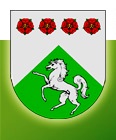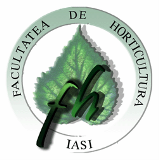PROJECT OBJECTIVES
The project will be focused upon physiologic and biochemical biomarkers investigation possibility, used in incipient diagnosis of ontogenetic development in fruit trees grafting incompatibility phenomenon. This study is very important, as theoretically and practical, in obtaining and improving the quality of planting material. The importance comes from a priori selection of the compatible partners which could reduce the losses due to the later incompatibility phenomenon. For the preliminary investigations there will be used different genotypic combinations for pear and quince with different compatibility. Later on, the investigations will be extended to other species too (plum, apricot) in order to verify the potential markers inside the taxonomic unities. In order to reduce the time necessary for obtaining efficient engrafted combinations, one of the objectives is to make some biologic patterns made by in vitro cultivation of scion-rootstock combination and their interaction investigation at tissue level by a in vitro and in vivo comparative study of some physiological and biochemical indicators at combinations wit different level or compatibility.
To reach the aim we set the following objectives:
1. Initializing the experimental field by planting scion-rootstock associations with levels of compatibility.
For this objective we will find the genotipic pear-quince combinations with different levels of compatibility. There will be selected the varieties with good perspective from agroproductivity point of view, fruit quality and resistence at endogenous factors. In order to maintain the fruit growing biodiversity and promote it at the international level there will be selected genotipes from the local germfunds. The incompatible varieties will be also grafted on compatible rootstocks as Pirus sativa in order to use them as control. We will also make some intraspecific graftings in order to find some combinations with higher compatibility. All the obtained combinations will be morphometric characterized and will be evaluated the grafting percentage succes.
2. Initializing in vitro scion-rootstock associations.
In vitro vegetal tissues cultivation techniques gives multiples advantages in the experimental programmes trough the fact that offers an uniform biologic material in a short time and in endogenous, controlled conditions. Many problems related to the incompatibility study could be solved by using in vitro micro grafting technique (Joley et Opitz, 1971; AI-Barazi et Schwabe, 1982; Sheibani et Villiers, 1995). For this objective we proposed the initialyzing the biologic material composed from pear varieties with different compatibility with quince, using this technique, setting the optimum cultivation conditions and characteryzing the obtained combination using morphological indicators.
3. Anatomic-morphologic study of scion-rootstock association with different levels on compatibility which were obtained in vivo and in vitro.
Even if there are numerous information regarding anatomic-morphologic processes from the joining place, utilizing some genotypes and new grafting combinations could determine us to make a characterization of the biological material also from this point of view. In addition, for this objective we will try to make a comparing study, in vivo and in vitro, during the vegetative period in order to identify the important moments of differentiations and vascular tissue regeneration at the associations with different levels of affinity. Such a study will allow us to make an efficient correlation of physiological and biochemical processes that take place at the joining place, the differentiation and new tissue formation, in this way the study has a high interdisciplinary approach.
4. Studies regarding the physiological processes dynamic in scion-rootstock association with different levels on compatibility which were obtained in vivo and in vitro.
Grafted trees components interaction has significant repercussions upon physiological processes expression, fact that is mentioned also at chapter about importance and scientific content relevance. From these reason physiologic indicators monitoring as photosynthesis intensity, hydric and electrolytic conductivity, and assimilator pigments content during the vegetation period, may give valuable information in selecting physiological markers to evaluate the affinity between scion and rootstock. Making these determinations at the material we will obtain in vivo and in vitro we will have results that will give us the opportunity to extrapolate the results obtained in vitro upon plants cultivated in the field.
5. Monitoring the biochemical indicators involved in vivo and in vitro tissue regeneration and the selection of the potential biochemical markers for early detecting of incompatibility phenomenon.
In stress conditions superior plants are capable to manifest a whole complex of reactions, the majority intermediate by chemical substances. Extremely sensitive are the enzymes involved in respiratory process and a large series of secondary metabolites like alkaloids, polyphenols, carotenes etc. Monitoring these substance content, by different grafting combination categories, gives us the possibility to select some biochemical markers to detect the incompatibility at grafted trees. In the last years, speciality literature gives much information regarding polyamines involvement, specially the putrescein, spermidin and spermin, in the process of plant adaptation to the oxidative stress. As a new aspect we suggested the investigation of these polyamines from the scion-rootstock association with different levels of compatibility in order to explain their involvement in tissue regeneration process at grafted trees.
6. Data synthesis referring to the scion-rootstock association for pear-quince, finding some complex causes that determine the graduations in compatibility phenomenon and obtained data extra poling for other fruit tree species.
For this objective we will analyze the obtained experimental data, select some potential physiological and biochemical indicators for incompatibility process and also determine those indicators in some plum-Prunus cerasifera combinations with different levels of compatibility. In this way we could test the potential markers universality for other taxonomic categories in order to reach some pertinent conclusions and recommendations.


"Ion Ionescu de la Brad" UNIVERSITY OF AGRICULTURAL SCIENCES AND VETERINARY MEDICINE FROM IASI
FACULTY OF HORTICULTURE



